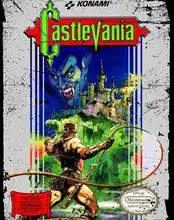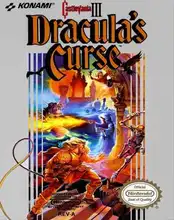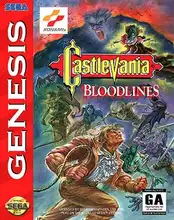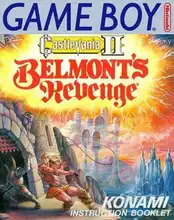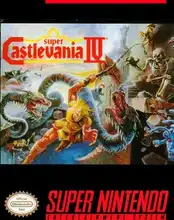The crack of a leather whip, the haunting strains of an organ, the dread of navigating a monster-filled castle – few series evoke such powerful imagery and feeling in retro gamers as Castlevania. For decades, Konami's gothic masterpiece has challenged players with precise platforming, relentless enemies, and an atmosphere thicker than Dracula's cape.
But what is it about the early Castlevania games, the ones that predate the sprawling 'Metroidvania' style, that keeps us coming back? Why does the pixelated terror of the 8-bit and 16-bit eras hold such a special place in our hearts? Let's dust off the old cartridges and take a nostalgic trip back to the land of vampires and vampire hunters.
Why Castlevania's Classic Era Endures
Before the maps expanded and the RPG elements took center stage, Castlevania was primarily about linear progression, pattern recognition, and mastering the whip. This era forged the series' core identity:
- Brutal, Rewarding Challenge: These games didn't hold your hand. Fixed stair climbing, enemies that knock you back, and bosses with strict patterns demanded patience and skill. Beating a tough section felt like a true accomplishment.
- Iconic Music: From "Vampire Killer" to "Bloody Tears" and "Simon's Theme," the soundtracks are legendary. They perfectly capture the gothic horror vibe and are instantly recognizable anthems for retro gamers.
- Unforgettable Atmosphere: Dracula's castle is a character in itself. Filled with classic movie monsters – zombies, skeletons, mermen, Medusa heads – and rendered with stunning pixel art, the setting is both terrifying and fascinating.
- Masterful Level Design: Despite the linear path, levels were intricate puzzles of platforming and enemy placement. Every jump, every swing of the whip, had to be timed just right.
The Classic Era: Key Titles That Defined the Legend
While the series spans many consoles and styles, certain games stand out in the minds of classic Castlevania fans:
- Castlevania (NES, 1986): The one that started it all. Introduced Simon Belmont, the whip, sub-weapons, and the core mechanics. Tough as nails but utterly groundbreaking.
- Castlevania III: Dracula's Curse (NES, 1989): A prequel adding multiple playable characters (Trevor Belmont, Sypha Belnades, Grant Danasty, Alucard), branching paths, and increased complexity. A high-water mark for the 8-bit era.
- Super Castlevania IV (SNES, 1991): A gorgeous 16-bit reimagining of the original. Featured incredible Mode 7 effects, multi-directional whipping, and arguably the best soundtrack in the series. A true SNES classic.
- Castlevania: Rondo of Blood (PC Engine CD, 1993): Often considered one of the best classic entries. Introduced Richter Belmont and Maria Renard, featured anime cutscenes, and refined the gameplay. A masterpiece that was less known in the West until later ports.
- Castlevania: Bloodlines (Sega Genesis, 1994): Konami's only Castlevania on the Genesis. Featured two unique protagonists, a darker, more mature tone, and levels that spanned across Europe. A fantastic, distinct entry for Sega fans.
These games, along with others on Game Boy and early PlayStation titles like Symphony of the Night (which bridged the gap to the Metroidvania style but is deeply rooted in this era's legacy), represent the core experience many retro gamers cherish.
Where to Whip Your Way Through Today
Thankfully, you don't need ancient hardware to revisit these nightmares. Konami has been good about making the classic Castlevania games accessible:
- Castlevania Anniversary Collection: Available digitally on modern consoles (Switch, PS4, Xbox One) and PC (Steam). Includes the NES trilogy, Super Castlevania IV, Bloodlines, and more. A fantastic starting point.
- Castlevania Requiem: Symphony of the Night & Rondo of Blood: Available on PS4. Lets you experience the legendary Symphony of the Night and its direct predecessor, Rondo of Blood.
- Digital Stores: Sometimes individual titles or bundles appear on platforms like GOG.com, often featuring PC ports or emulated versions.
- Emulation & Fan Projects: For the technically inclined, emulation is a path to playing many older titles. Resources like Archive.org also host historical software, though legality varies by region and title. DOSBox is essential for playing any old PC ports if you can find them.
More Than Just Games
The impact of Castlevania extends beyond the pixels. The recent animated series on Netflix brought the characters and world to a new generation, proving the enduring appeal of the gothic horror narrative. The music is celebrated in concerts and remixes. The challenge is a badge of honor among gamers.
The Legacy Lives On
Whether you first faced Dracula on a flickering CRT or discovered the series through a modern collection, the magic of Castlevania remains. It's a testament to tight design, atmospheric presentation, and a challenge that feels earned. So grab your whip, stock up on holy water, and prepare to face the night – Dracula's castle is always waiting.
FAQ
Q: Which classic Castlevania should I play first? A: Super Castlevania IV on SNES is often recommended for newcomers due to its smoother controls and excellent presentation, while Castlevania III offers more complexity and character variety.
Q: Are the classic Castlevania games really that hard? A: Yes, they are known for their difficulty! They require patience, practice, and learning enemy patterns. It's part of their charm and the feeling of accomplishment when you succeed.
Q: Does the Castlevania Anniversary Collection include all the classic games? A: It includes many key ones like the NES trilogy, Super Castlevania IV, and Bloodlines. Rondo of Blood and Symphony of the Night are in a separate collection, Castlevania Requiem.
Q: Is Symphony of the Night considered a classic Castlevania? A: Symphony of the Night is often seen as the bridge game. While it introduced the Metroidvania style, it retains many classic elements and is deeply beloved by fans of the classic era, making it an essential play.

